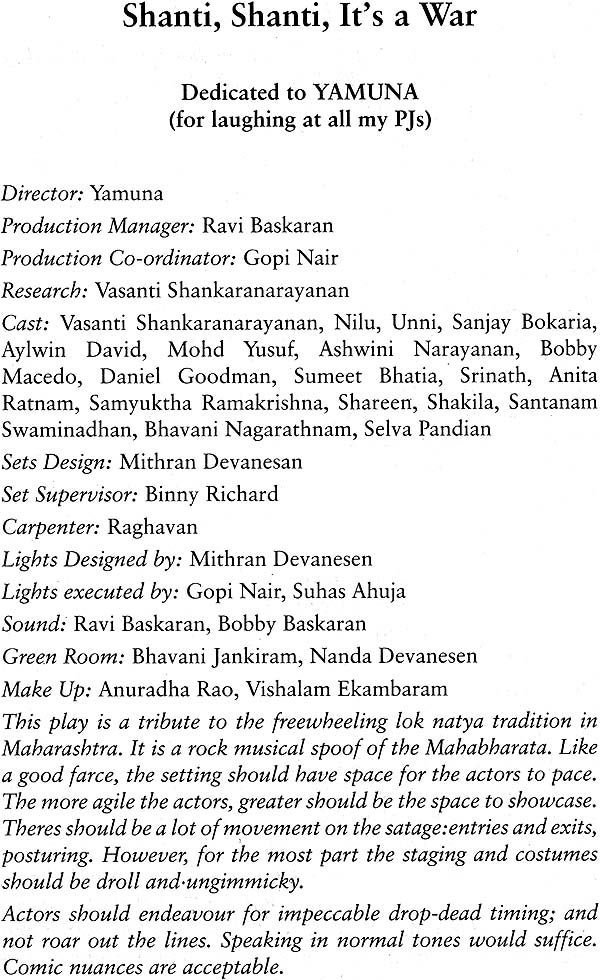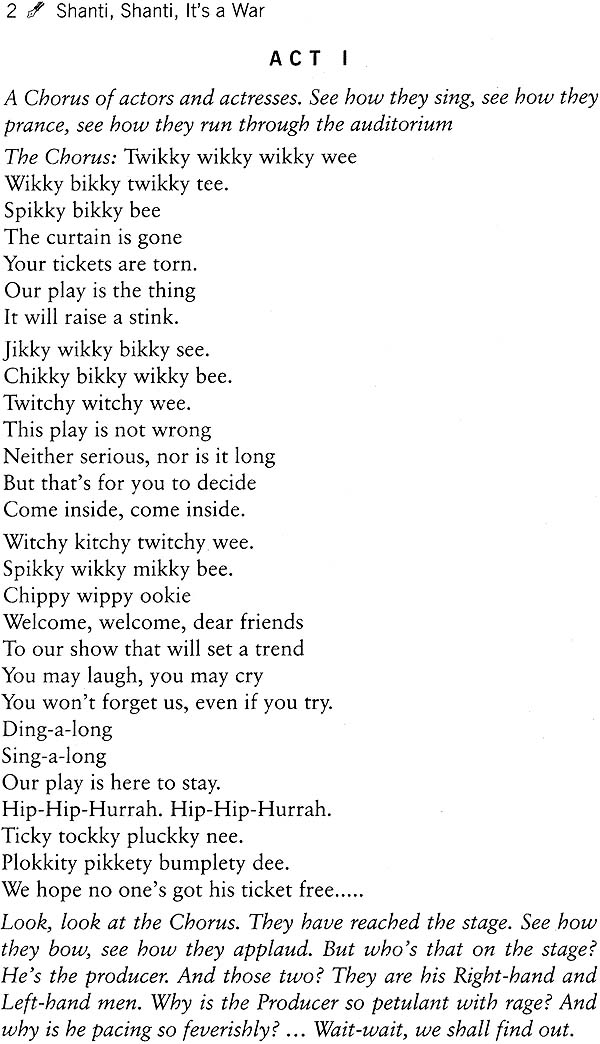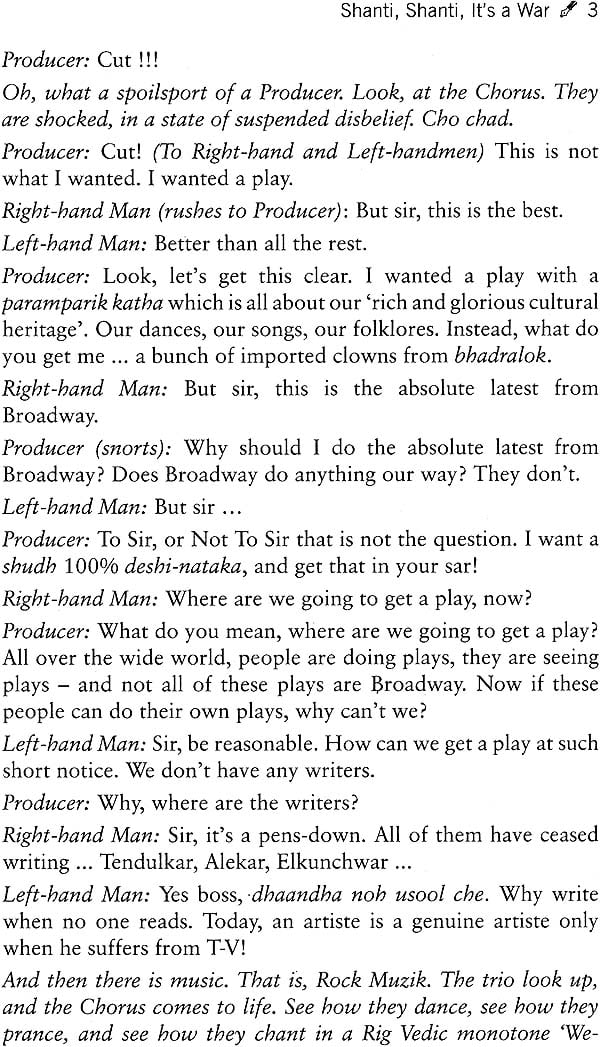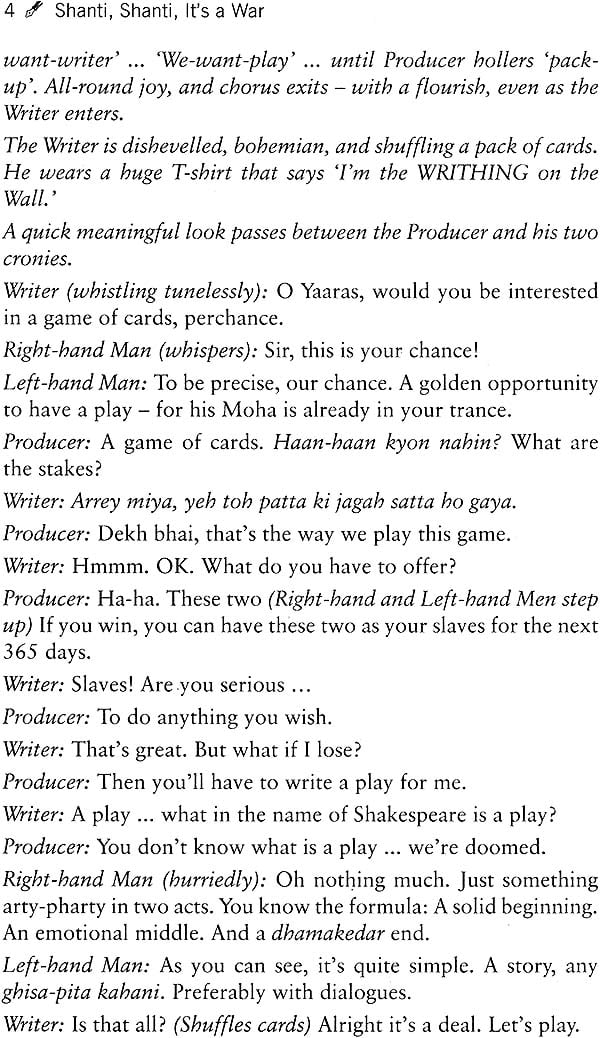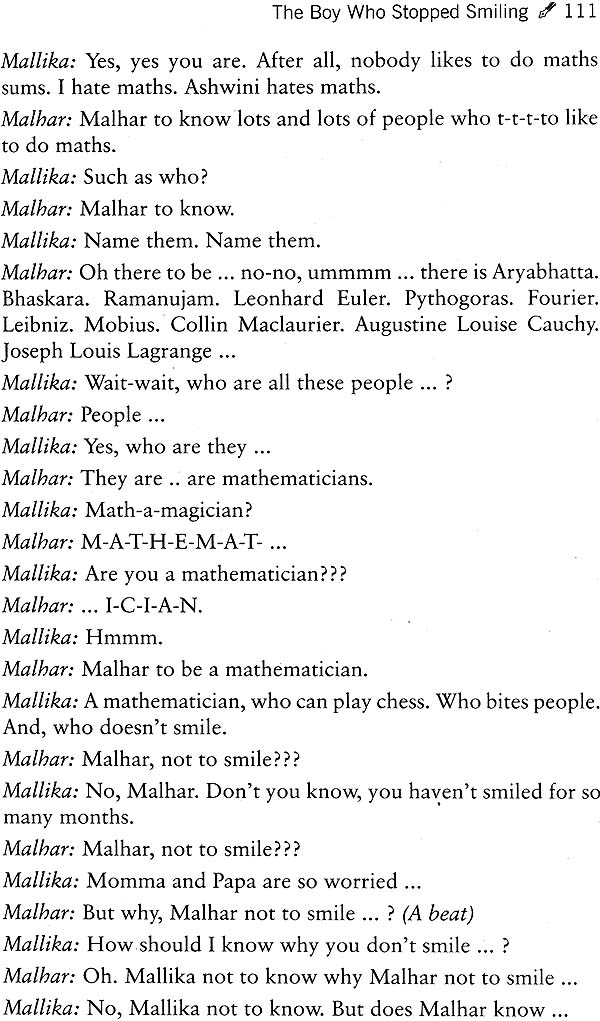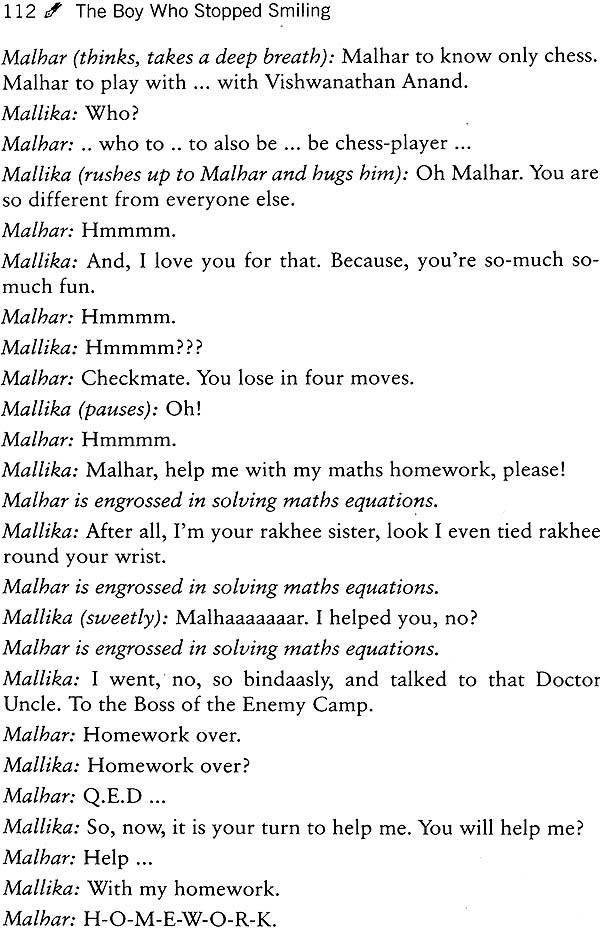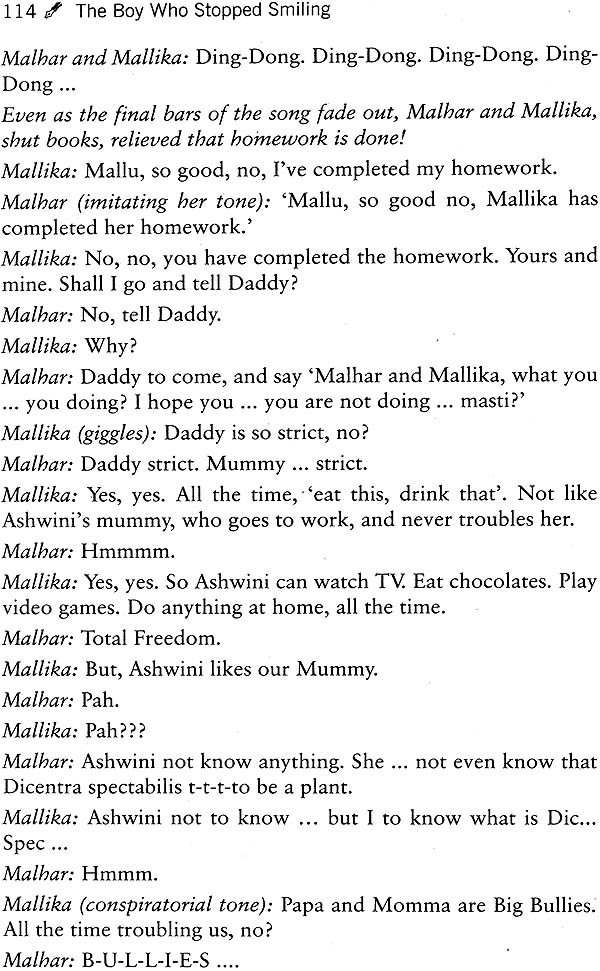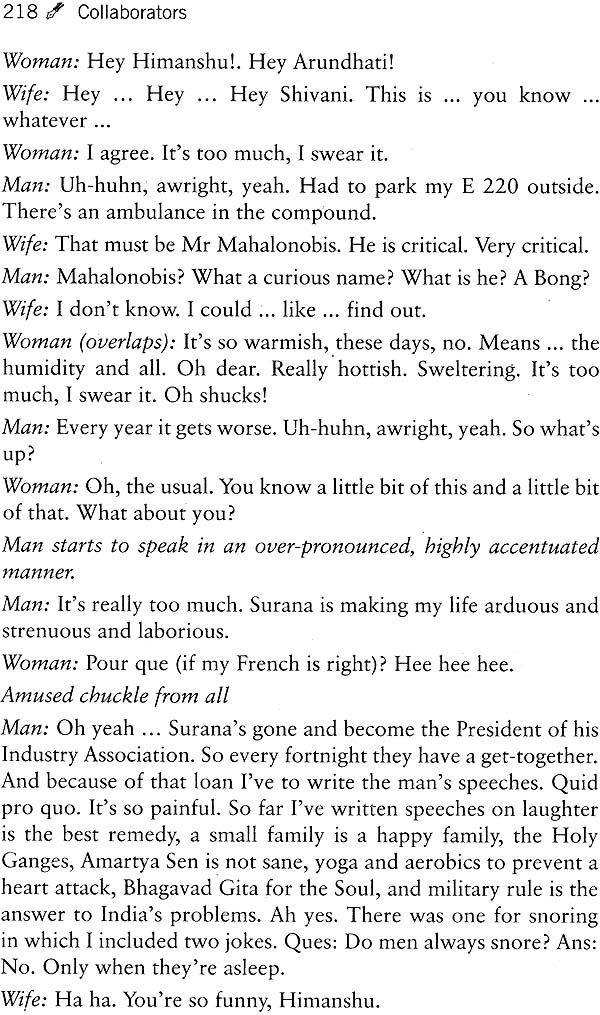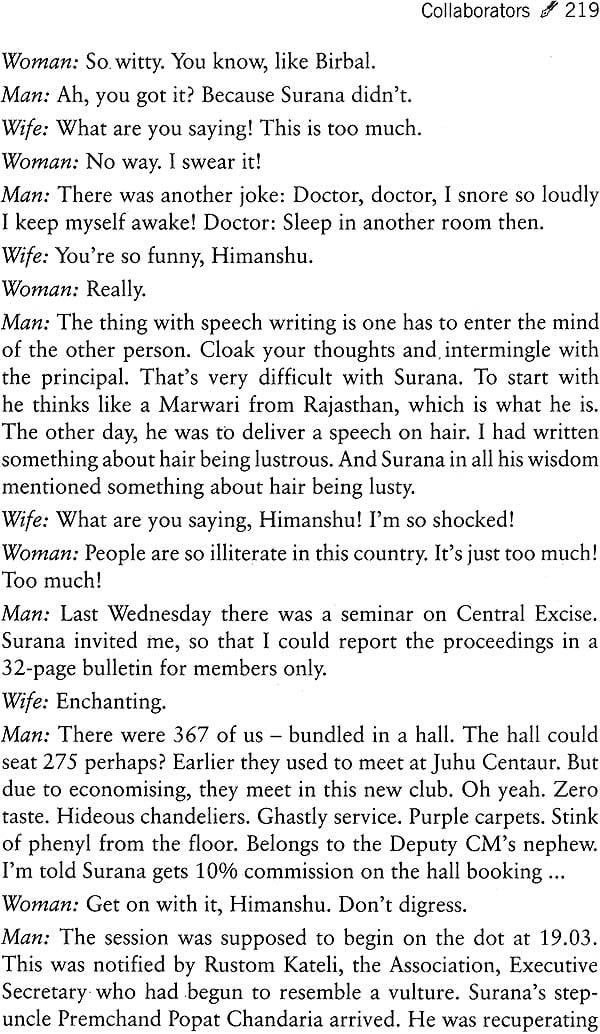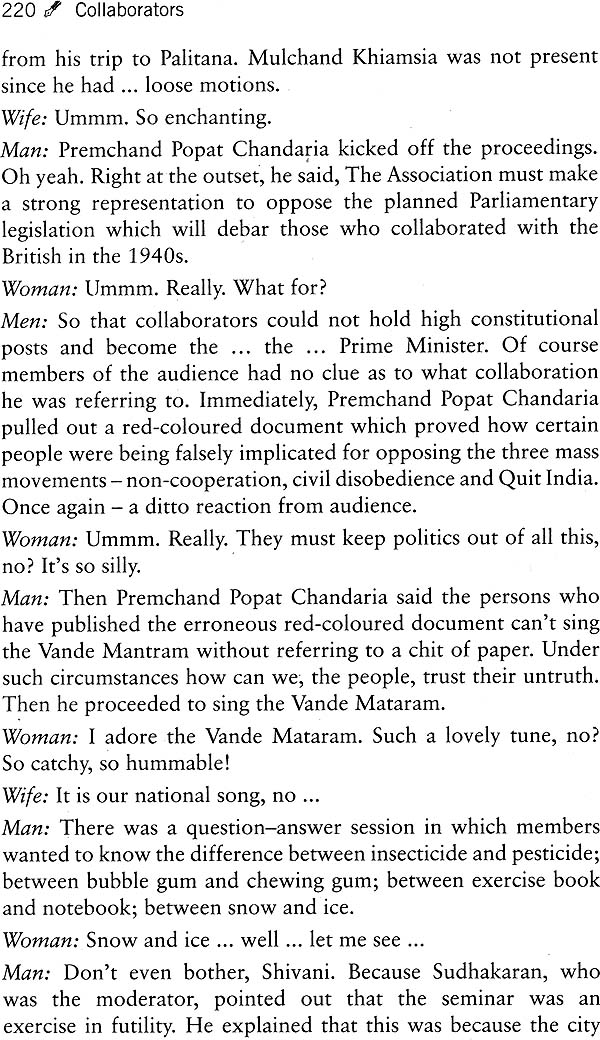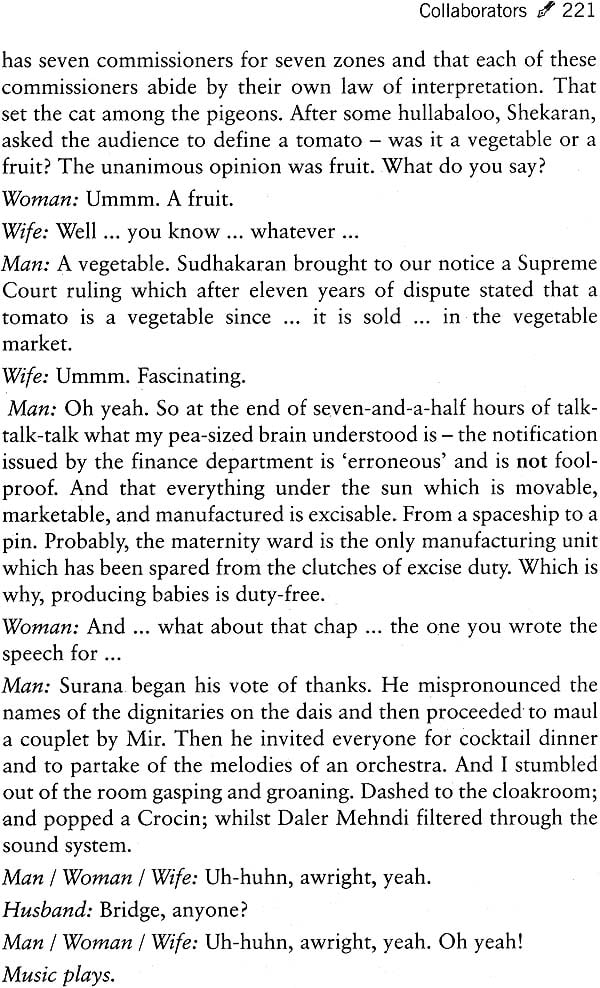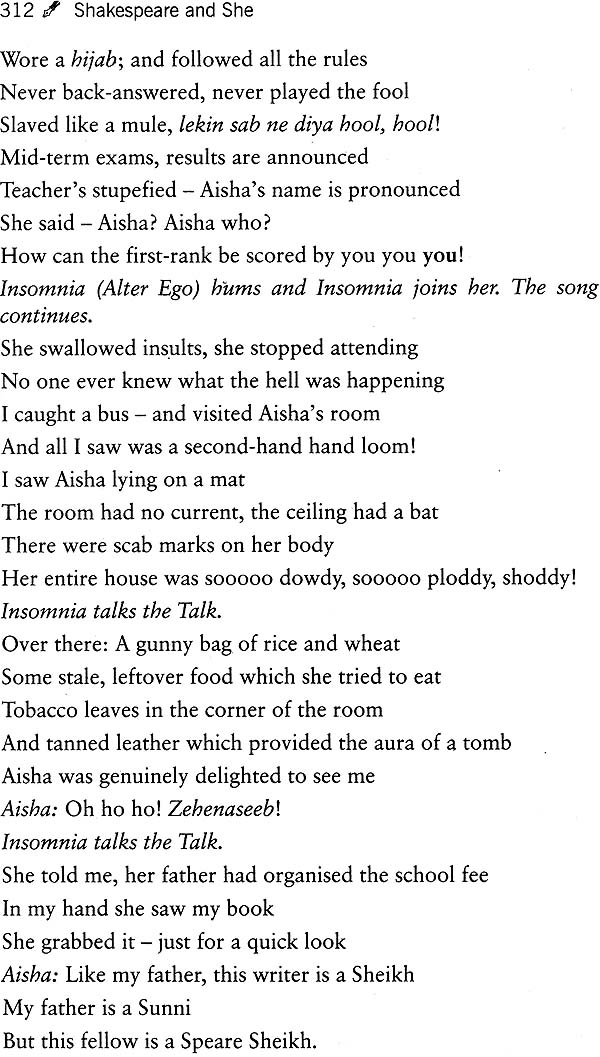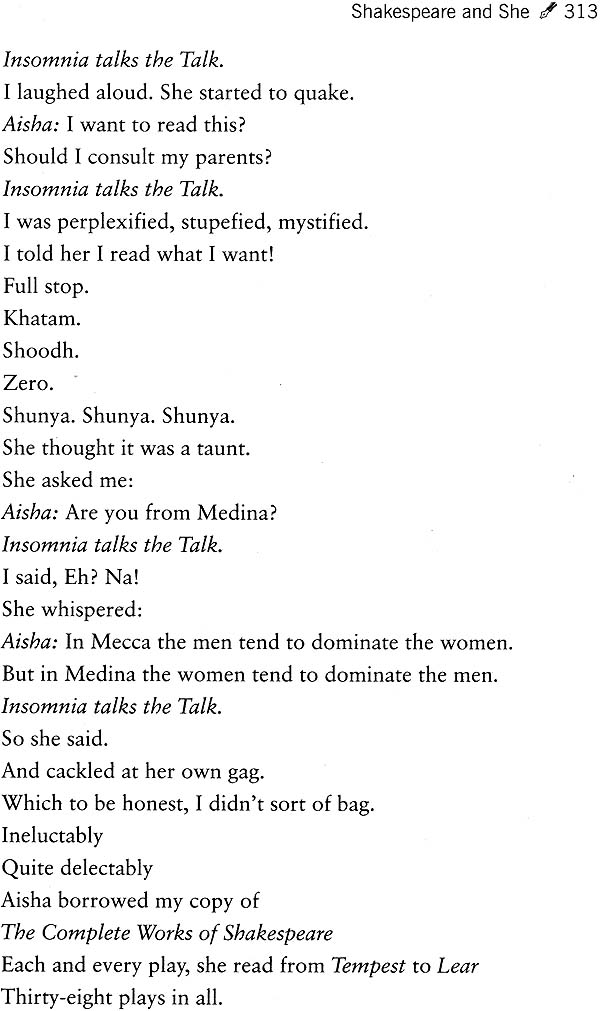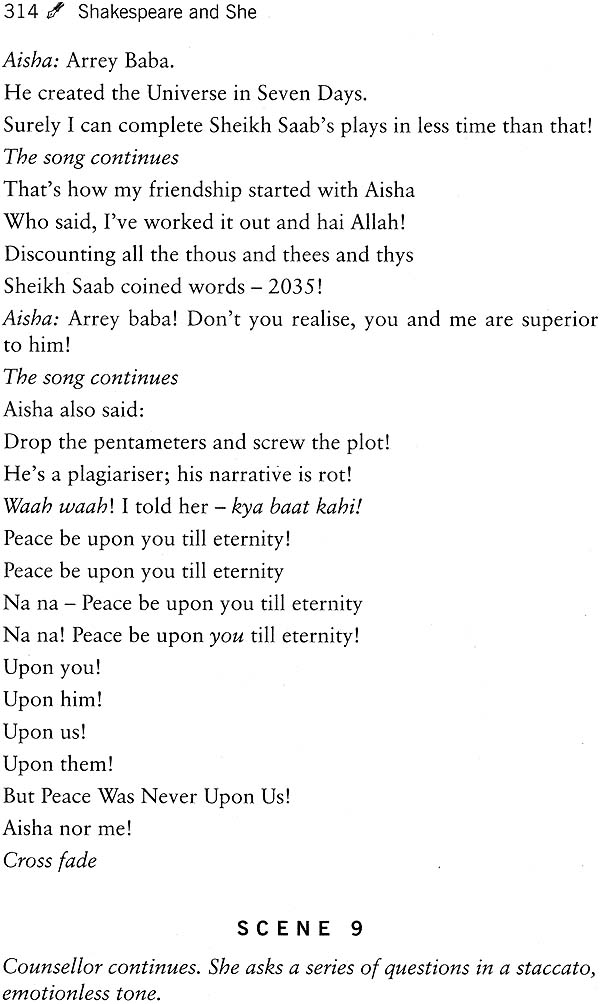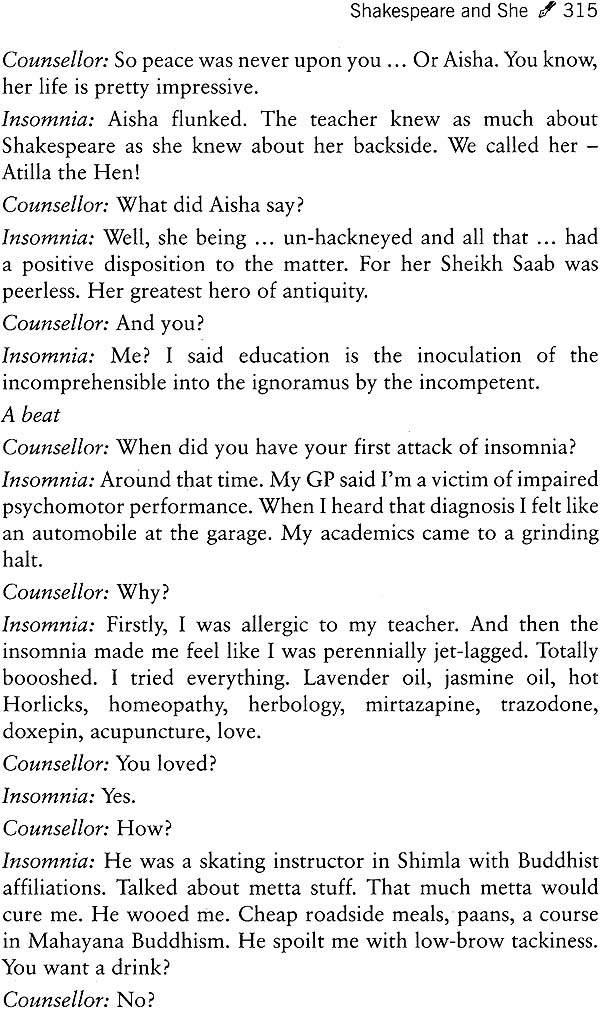
3, Sakina Manzil and Other Plays
Book Specification
| Item Code: | NAH271 |
| Author: | Ramu Ramanathan |
| Publisher: | Orient Blackswan Pvt. Ltd. |
| Language: | English |
| Edition: | 2012 |
| ISBN: | 9788125045113 |
| Pages: | 400 |
| Cover: | Paperback |
| Other Details | 8.5 inch X 5.5 inch |
| Weight | 380 gm |
Book Description
About the Book
One of the aims of this collection is to record the work of a contemporary playwright so we have an opportunity to see the world through the eyes of a playwright living amongst us. Ramu Ramanathan was born in Kolkata and grew up in Mumbai, where he currently resides. Theatre is his passion and he not only writes and directs plays but also conducts workshops on plays and playwriting and has organised numerous play-reading sessions and workshops.
This volume includes Shanti, Shanti, It’s a War; The Boy Who Stopped Smiling; Curfew; Mahadevbhai (1892-1942), Collaborators; 3, Sakina Manzil; Shakespeare and She; and Jazz.
Introduction
Shanta Gokhale in her chapter ‘The Dramatists’ in Illustrated History of Indian Literature in English says that Krishna Mohan Banerjea’s The Persecuted, or Dramatic Scenes Illustrative of the Present State of Hindoo Society in Calcutta was the first play written by an Indian in English in 1837. This was more a dramatised debate rather than a play to be seen on stage. After this we had Sri Aurobindo writing between 1890 and 1920, his most important plays being Perseus The Deliverer and Savitri; Harindranath Chattopadhyaya wrote between 1918 and 1950 (Chokha Mela and Eknath); A S Panchapakesa Aiyer wrote between 1913 and 1942 (The Slave of Ideas and Sita’s Choice); and T P Kailasam wrote between 1930 and 1945 (his most famous plays being The Burden and Karna). Most of these playwrights meant their plays to be read and not performed, the essence of closet drama.
It is now almost two hundred years since Indians started writing plays in English. It was only after the 1950s that performance- oriented drama began to appear. The watershed in Indian theatre in English came after Independence. S Krishna Bhatta in his book Indian English Drama: A Critical Study, published in 1987, lists more than 200 plays written in or after the 1950s. However, most of them were not performed or published. With the arrival of Asif Currimbhoy things began to change in the Indian English drama scene. He was one of the first Indian playwrights to produce plays that could be performed. Many playwrights writing at this time, in the 1960s, met with more success than the earlier ones, primarily because they were writing plays to be acted. Some of these playwrights were Nissim Ezekiel (Nalini and Sleepwalkers); Gieve Patel (Princes and Savaksa) and Pratap Sharma (A Touch of Brightness and The Professor Has A Warcry).
It was at the end of this decade, in 1968, that the Theatre Group, Bombay, announced the Sultan Padamsee Award for Indian plays in English. This award was won by Gurcharan Das’s Larins Sahib and his group produced and staged it in Bombay in 1969. Gieve Patel’s Princes and Dina Mehta’s Mythmakers also competed for this award.
Cyrus Mistry’s Doongaji House won the second Sultan Padamsee award, in 1978. This play dealt with the declining fortunes of a Parsi family living in the Parsi heartland - Bombay. His latest play, The Legacy of Rage, deals with the Christian community and is located in Bombay.
Dina Mehta’s play Brides Are Not For Burning won an international award from the BBC in 1979. In the play she took up the social problems of dowry and highlighted the harassment that brides who don’t bring in enough dowry have to face. Her later play, Getting Away With Murder (1989), was also shortlisted by the BBC for the World Playwriting competition. It was on the shortlist of seven specially commended radio plays out of 902 entries. Her latest play, Sister Like You (1996), a play on domestic violence, was also shortlisted for the British Council New International Playwriting awards. Also shortlisted for the same award was another Indian playwright writing in English, Poile Sengupta, for her play Keats Was A Tuber (1996). Her first full-length play, Mangalam, was written in 1993.
In the 1980s and 90s, Indian plays written in English came into their own. The others leading this movement were Mahesh Dattani and Manjula Padmanabhan. I believe it is from the 1980s that Indians started using English as their own language, not hesitating to intersperse it with the local language where required. They were and are very comfortable with the English language and are no longer tied down to English as the BBC uses it, or its Received Pronunciation.
Yet, in the world of Indian Writing in English, the genre of drama still has the status of stepchild. There are many dramatists in India who are writing, directing and producing plays, but most are unaware of the work the others are doing. Few publishers like to risk publishing collections of contemporary dramatists. Drama can be both immortal (living through performances) and tragically short-lived. After all, once a play has been performed, it’s over. It lingers in the memory of that particular audience. And then, it vanishes from the stage, ephemeral as it is. A few playwrights - Asif Currimbhoy, Gurcharan Das, Manjula Padmanabhan, Mahesh Dattani and Poile Sengupta - have managed to get their plays published. But many other talented playwrights have been forgotten. When I set out to compile this collection, this was one of my aims: to record the work of a contemporary playwright so students, thinkers and the general public have an opportunity to see the world through the eyes of a playwright living in their midst.
My introduction to Ramu Ramanathan was from my visits to Mumbai. I’ve always made it a point to see a few plays whenever I visited Mumbai. On one such visit, a friend who knew of my interest in drama, called me and said, ‘There is this play about Gandhi and his secretary - it’s supposed to be quite good. Would you like to see it?’ I readily agreed. And what I Saw was Mahadevbhai, one of the most powerful dramas that I have ever seen. And that was my introduction to Mahadevbhai and to Ramu Ramanathan. I have seen this play three times, and each time it got a standing ovation from the audience! I have been fortunate enough to see a few more of his productions. I felt that his plays needed to be published to find a wider audience: and that is how this book came into being.
Ramakrishnan Ramanathan, or Ramu Ramanathan as he is popularly known, belongs to the current breed of writer-directors writing Indian plays in English. Born in Calcutta (as it was then called) Ramu Ramanathan grew up in Bombay, where he started schooling in the early seventies. In an interview with Dr Radha Ramaswamy, Ramanathan describes himself: ‘I’m the ultimate national integrationist.’ His father is a Palakkad Brahmin, his mother is a Punjabi and he is married to Kinnari, a Nagar from Bhavnagar and their home is Mumbai!
Ramanathan started his journey as a playwright, in college, in 1987, with the award-winning one-act play, I Am I (performed by a group of college friends with a lot of talent, who steered clear of theatre!), What It Is and Gagan Mahal. He has, to date, penned about fifteen plays. One of his outstanding plays Cotton 56, Polyester 84, was performed first in Hindi at the Prithvi Theatre Festival in 2006. It won him the META (Mahindra Excellence in Theatre Award) for the best original script in 2007. A well-researched docu-drama, it is about the city of Mumbai where cotton mills are being replaced by malls.
He has also done theatrical adaptations and directed the following:
Edoardo Erba’s Italian drama A Play about a Painter; Adya Rangacharya’s Kannada play Sanjivani; Thuppatan’s Malayalam play The Train To Argentina; Herman Hesse’s Steppenwolf; Marguerite Duras’ L’Amante Anglaise; Nirmal Verma’s Ded Inch Upar; Vaclav Havel’s Audience and Mistake; Jean Genet’s Deathwatch; and Samuel Beckett’s Krapp’s Last Tape.
Ramanathan briefly experimented with writing for the radio. He wrote an eight-episode serial based on P G Wodehouse’s Small Bachelor called Funny People, Lovely Lives. He also wrote a series of IS-minute skits titled By the Way. Both these projects were undertaken for All India Radio in 1995. His play Collaborators (which is part of this collection) was the Regional Award Winner of the BBC International Playwriting Competition in 2003.
Contents
| Introduction | vii | |
| 1 | Shanti, Shanti, It’s a War | 1 |
| 2 | The Boy Who Stopped Smiling | 61 |
| 3 | Curfew | 130 |
| 4 | Mahadevbhai (1892-1942) | 175 |
| 5 | Collaborators | 213 |
| 6 | 3, Sakina Manzil | 258 |
| 7 | Shakespeare and She | 290 |
| 8 | Jazz | 332 |
| Interview with Ramu Ramanathan | 368 | |
| Glossary | 376 |
